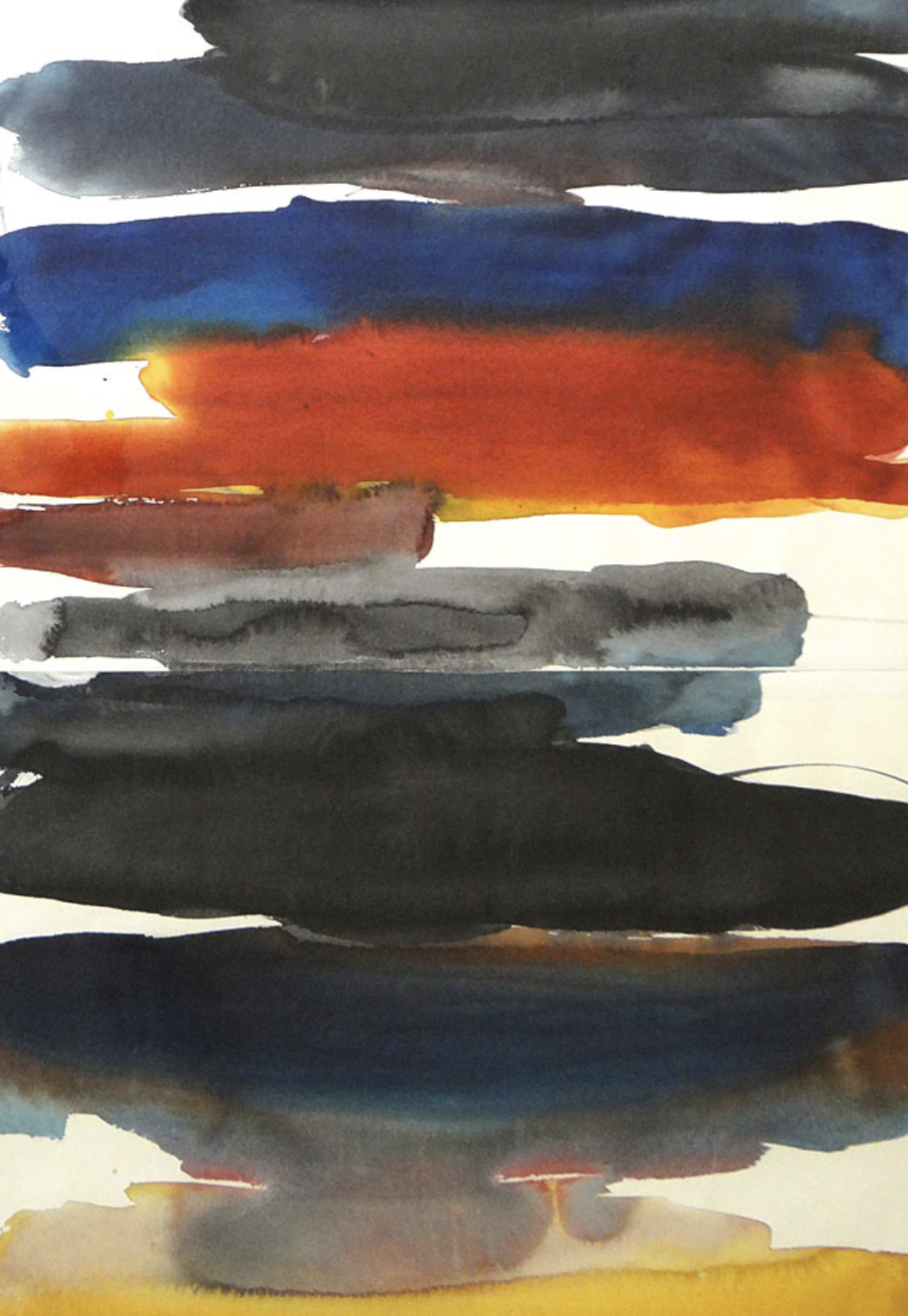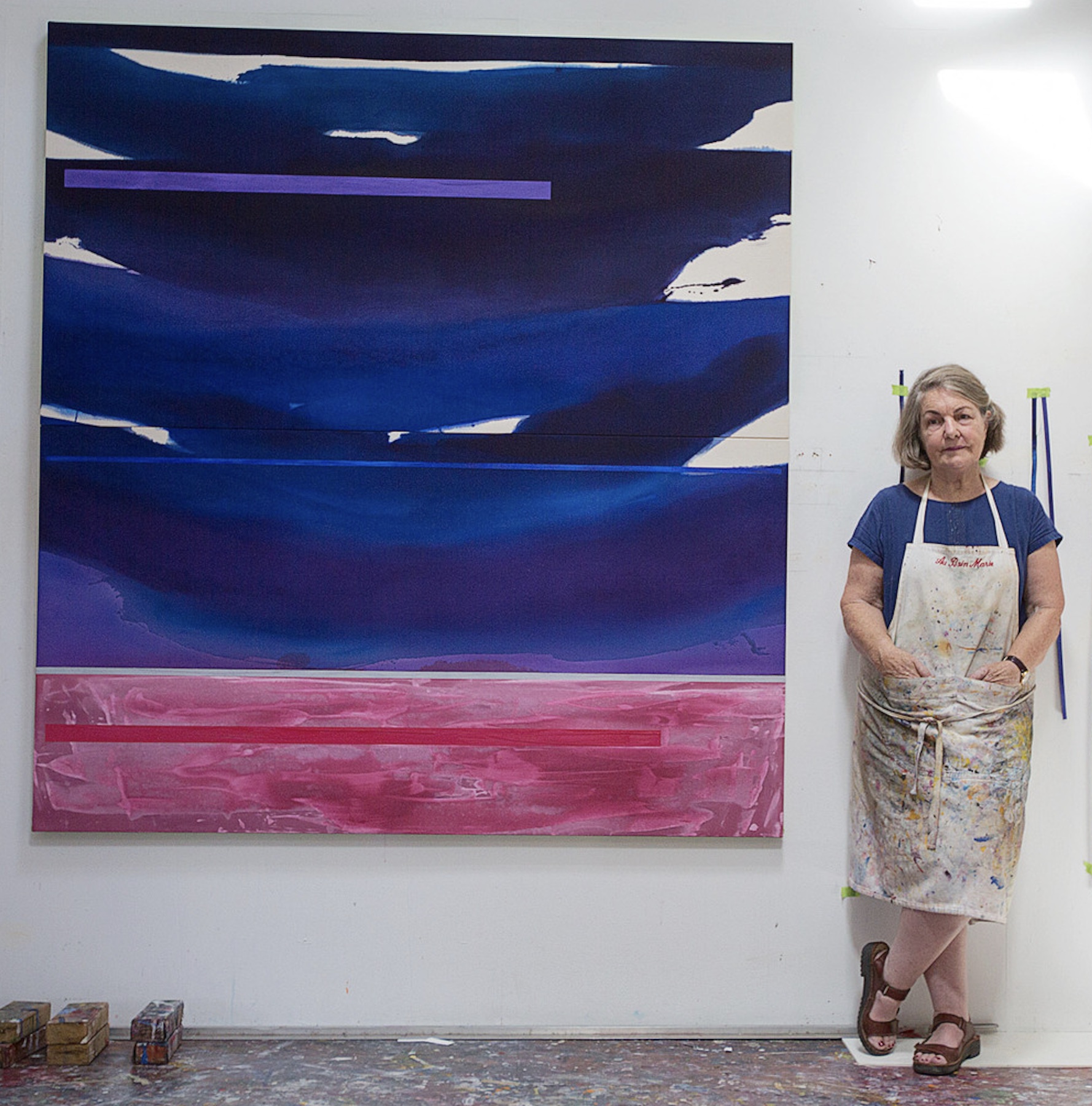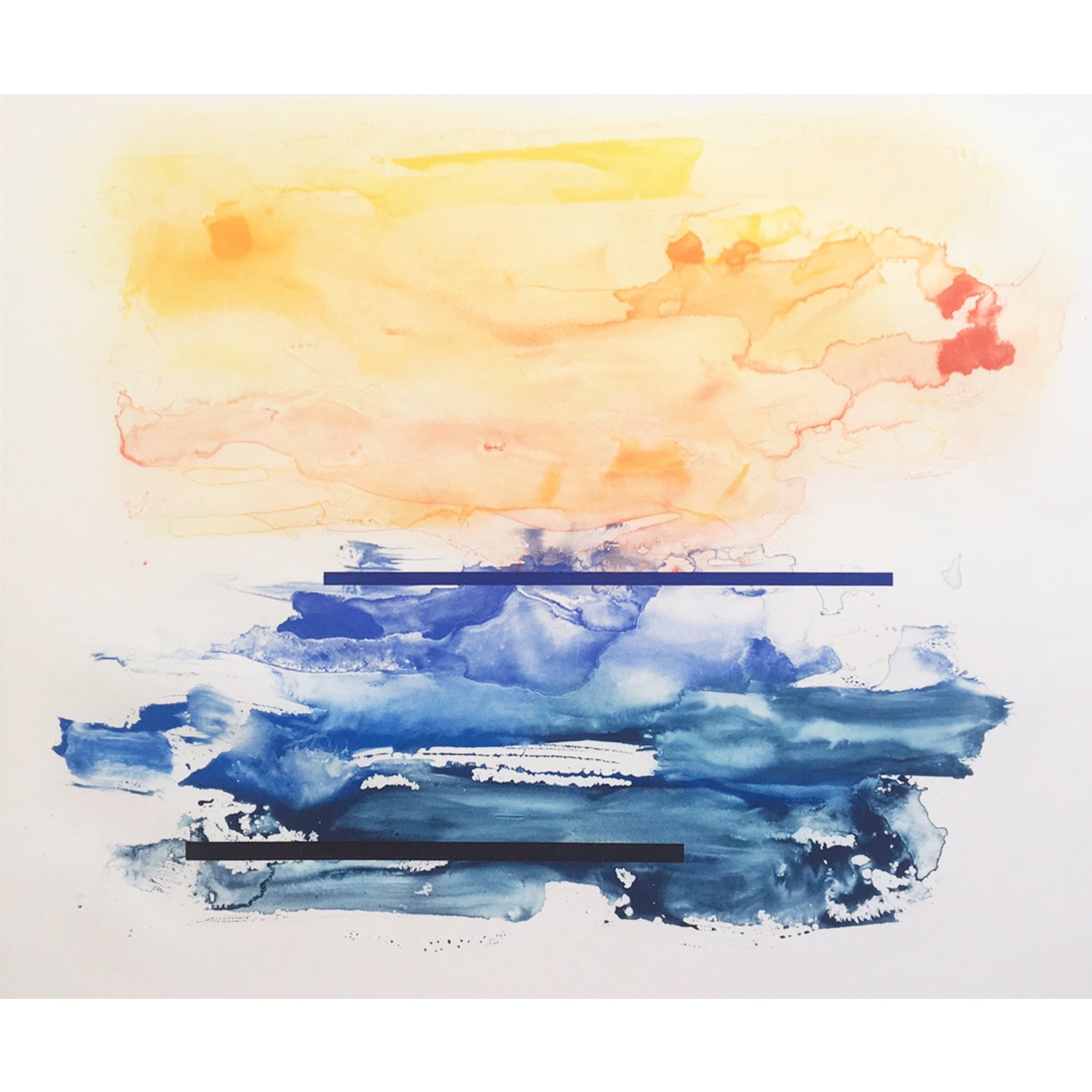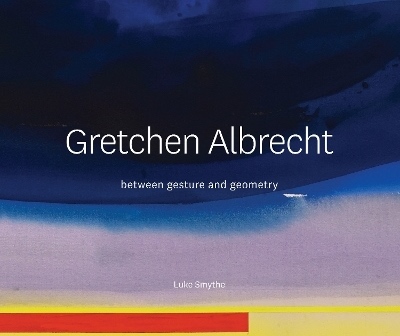Graham Reid | | 4 min read

For a couple of years in the mid Seventies I taught at Penrose High School – now One Tree Hill College. The school boasted a fine collection of New Zealand art, purchased through the agency of its new and innovative principal Murray Print (who'd started there in '69) and the art department lead by Wally Crossman.
Around the walls and halls were works by Pat Hanly, Ralph Hotere, Colin McCahon, Robin White and many others.
Most striking however was the large painting by Gretchen Albrecht in the school library.
There would be days when, rather than go to the staff room or music department at lunchtime, I would simply sit in the library and stare at it.
Albrecht's massive canvases had that effect: mesmerising, impressive in scale and vibrating with colour.
I was only in my early 20s and don't think I'd ever seen any of her work outside the pages of a magazine. In the flesh this abstract piece was almost overpowering in its beauty and mystery.
 Gretchen Albrecht – now 80 and still exhibiting – is the subject of Monash University art academic Luke Smythe's profusely illustrated (more than 250 works) and lavishly presented Between Gesture and Geometry, a handsomely presented large format update of his 2019 monograph.
Gretchen Albrecht – now 80 and still exhibiting – is the subject of Monash University art academic Luke Smythe's profusely illustrated (more than 250 works) and lavishly presented Between Gesture and Geometry, a handsomely presented large format update of his 2019 monograph.
Taking a clear, chronological approach to Albrecht's life but with penetrating commentary on her works, method and subjects, it is not just an easy book to read and assimilate but effectively illuminates the subtle changes in her practice.
Albrecht came to the art world at Mt Roskill Grammar when she persuaded her parents to let her drop French for Art. Influenced by the old masters but inhaling more than mere narrative skills, she went to Elam for four years but there was a personal struggle parallel to her work.
She became pregnant in her first year, married (her husband goes unnamed), had a boy, they all moved back in with her parents, the marriage broke up and ended in divorce. All this with a few years.
To some extent a few works referred to this in male figures which are either predatory or romantic. Her line drawings – pencil on paper, a necessary economy for a poor student – show the influence of Picasso but her paintings are boldly expressive.
There was the brief period of political art in the Vietnam era (paintings, collages, political, Pop-influenced) but her true calling was yet to come.
With support from Hamish Keith and Colin McCahon she had her first solo exhibition a year after graduation and throughout the Sixties her work showed a blazing expressionism in deep reds and assured brushstrokes.
A number of factors pushed her further into abstraction: her experiments in staining the canvas with paint then seeing the breathtaking 1971 exhibition by the American Morris Louis at the Auckland City Art Gallery.
 That showing of Louis' massive works had an impact on all who saw it, not the least Albrecht – if for no other reason than the sheer physical heft of the works and his technique validated her own experiments.
That showing of Louis' massive works had an impact on all who saw it, not the least Albrecht – if for no other reason than the sheer physical heft of the works and his technique validated her own experiments.
While teaching at Elam in the early Seventies the autograph style of abstraction we associate with Albrecht emerged as if fully formed in large, striated works which referred to the landscape and sky: titles of pieces at this time include Dusk, Red Sky – Golden Cloud, Early Morning Rising and Landscape Scroll, all appearing in the book.
It was a work from this rich period I saw at Penrose High School.
Albrecht was part of the artistic zeitgeist of the time alongside McCahon, Toss Wollaston and Milan Mrkusich.
Reviews were almost unanimously favourable – to Smythe's credit he notes commentary which wasn't – and her colour palette changed to accommodate violet and pink.
 She also explored new techniques of application: washing with sponges and spray guns among them.
She also explored new techniques of application: washing with sponges and spray guns among them.
Her inspiration came from classic music and poetry – a refinement of the Renaissance works which has so affected her at school – and in 1978 she was commissioned to create seven large banners for composer Gillian Whitehead's adaptation of Wagner's Tristan und Iseult.
Albrecht's world and work was expanding, even more so after travel to the US and Europe, taking in chapels and frescoes in the latter.
In the early Eighties her geometric work emerged in the hemispherical paintings and Smythe is especially insightful when teasing out the nuances of these works and the subtle differences in technique and influences.
 In subsequent decades she worked on large-scale paper works, print-making and oval canvases, again her palette and techniques explored other realms.
In subsequent decades she worked on large-scale paper works, print-making and oval canvases, again her palette and techniques explored other realms.
The text is divided into periods and the penultimate chapter 2008-2018 shows Albrecht as innovative as ever: bright gold on linen, remarkable seascapes and landscapes.
The final new chapter, 2019-2023 Time's Measure, acts like a homecoming in that Albrecht returned to her signature hemispheres and classical references (the After Goya paintings) and the final work illustrated across a full page is the deep and beautiful Compline (darkness falls) of 2021.
Gretchen Albrecht is to be counted among this country's most important artists, one whose work has consistently beguiled and gently challenged.
 Luke Smythe and Massey University Press have presented a persuasive overview of an artist whose work has appeared at Te Papa, the Auckland City Art Gallery, in Australian collections, at the Sarjeant Gallery in Whanganui, many private collections (who kindly loaned them for reproduction on these pages) and the New Zealand Parliament.
Luke Smythe and Massey University Press have presented a persuasive overview of an artist whose work has appeared at Te Papa, the Auckland City Art Gallery, in Australian collections, at the Sarjeant Gallery in Whanganui, many private collections (who kindly loaned them for reproduction on these pages) and the New Zealand Parliament.
And on the wall of the library at Penrose High School.
GRETCHEN ALBRECHT; BETWEEN GESTURE AND GEOMETRY by LUKE SMYTHE Massey University Press $85





post a comment